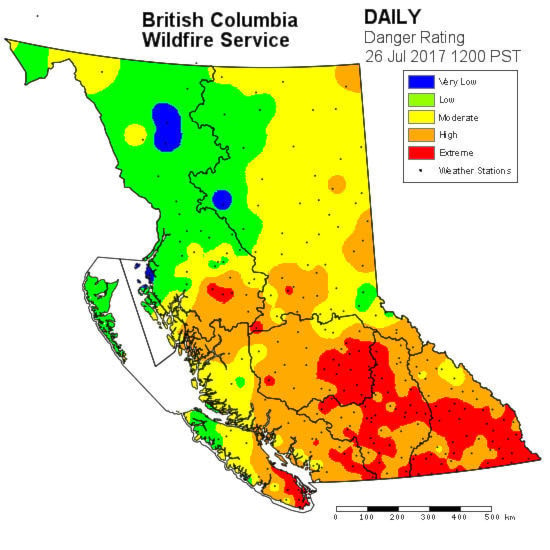Sooke Fire Rescue is bracing itself for a long, hot summer as the fire danger rating hit extreme this week on the Island’s south coast.
Most areas of B.C. are already under extreme fire danger risk, including the Cariboo, Kamloops and Southeast regions.
Meteorologists with Environment Canada say it’s been days since rain was recorded by sensors in Sooke.
Environment Canada is forecasting hot and dry weather will continue over the next week with temperatures to hit highs of 18C to 24C.
Sooke Fire Chief Kenn Mount expects that any wildfires that do do start here will likely be caused by humans.
Human-caused fires are already a problem this year for Sooke firefighters.
Earlier this month, a one-hectare forest fire on the south face of Mount Manuel Quimper was considered caused by human. Firefighters also responded to several smaller fires that could have had disastrous results if not for quick response time.
“Extremely dry forest fuels and the fire risk is very serious. New fires will start easily, spread rapidly, and challenge fire suppression efforts,” said Mount.
Human-caused fires can include not putting out a cigarette properly, using firearms to shoot explosives like propane tanks and canisters, and motorized users on ATVs and dirt bikes idling their vehicles next to tall dry grass, according to B.C. Wildfire Service.
Greater Victoria is currently on an open fire and campfire ban.
What the danger class ratings mean
Low: Fires may start easily and spread quickly but there will be minimal involvement of deeper fuel layers or larger fuels.
Moderate: Forest fuels are drying and there is an increased risk of surface fires starting. Carry out any forest activities with caution.
High: Forest fuels are very dry and the fire risk is serious. New fires may start easily, burn vigorously, and challenge fire suppression efforts. Extreme caution must be used in any forest activities. Open burning and industrial activities may be restricted.
Extreme: Extremely dry forest fuels and the fire risk is very serious. New fires will start easily, spread rapidly, and challenge fire suppression efforts. General forest activities may be restricted, including open burning, industrial activities and campfires.



